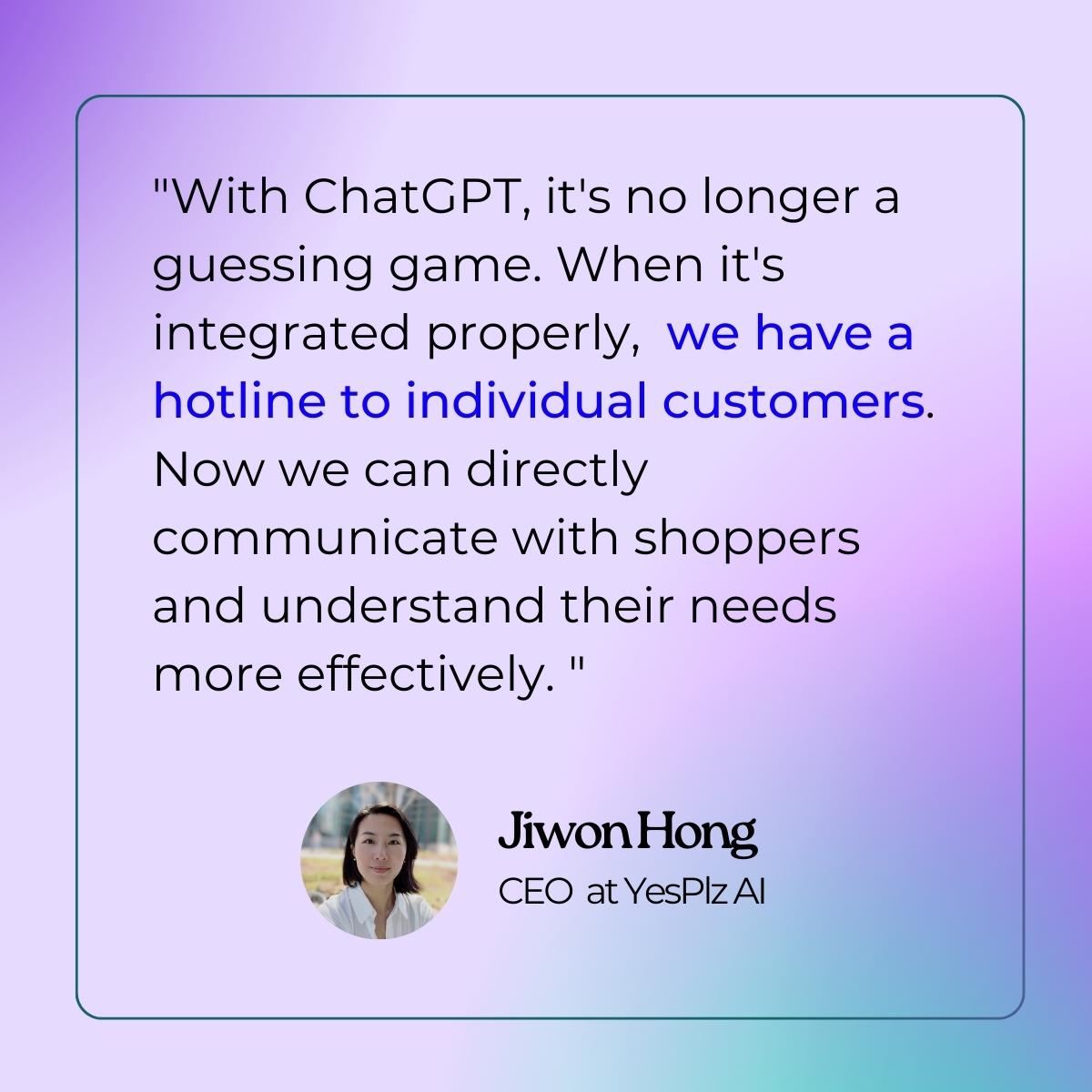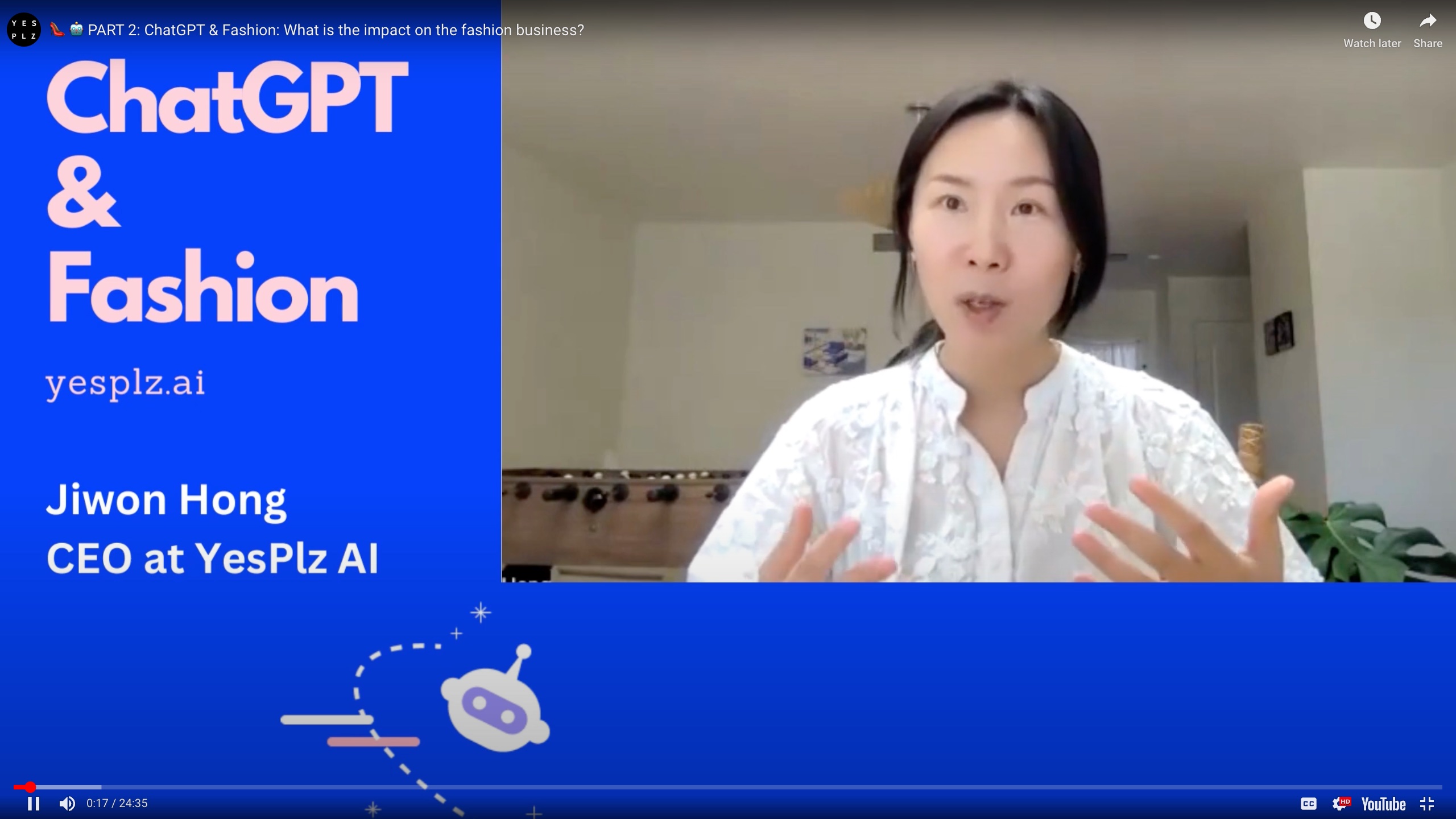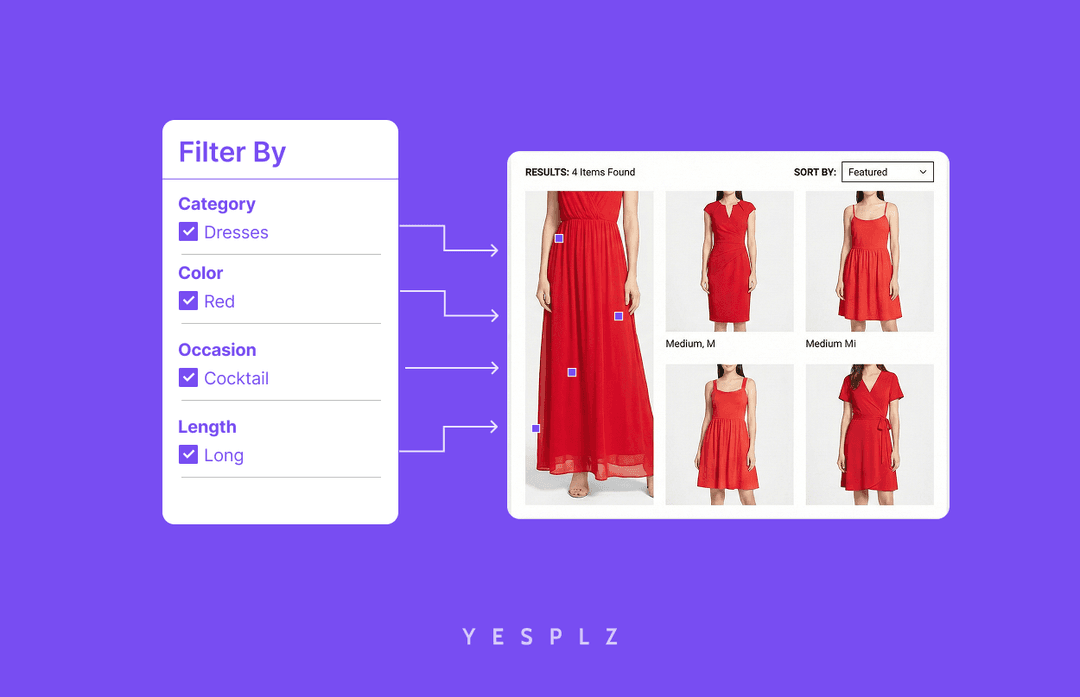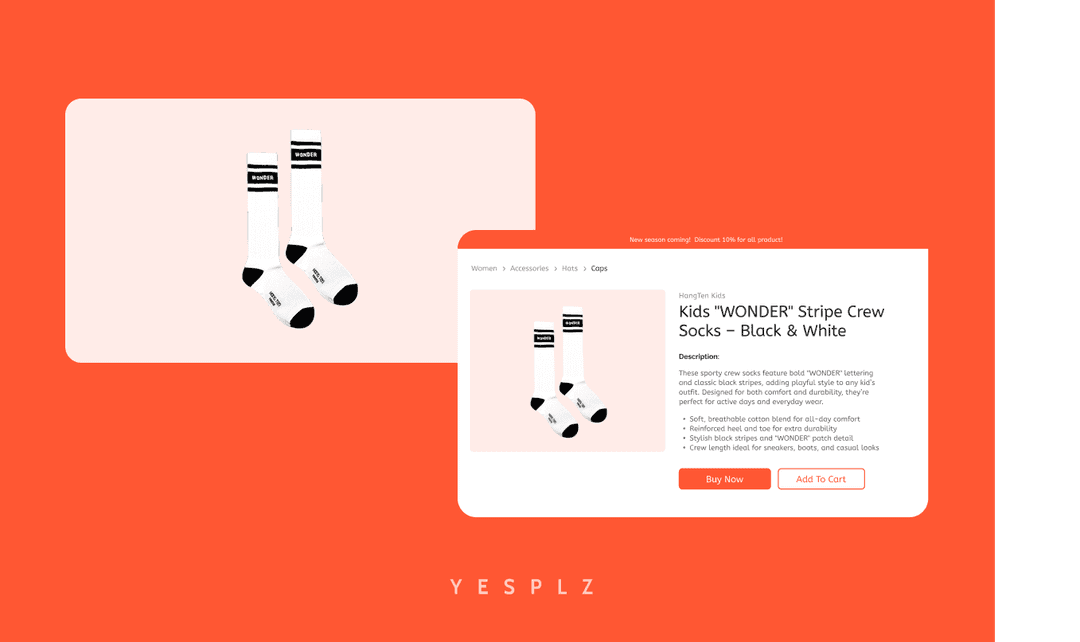An Analysis
by YesPlz.AIApril 2023
.jpg&w=1920&q=75)
The above video is Part 2 of YesPlz's Webinar on ChatGPT for eCommerce and the Future of Fashion
The shift towards digital transformation is an unavoidable trend of the fashion industry, and ChatGPT for eCommerce is positioned to lead this transformation. However, some may wonder what actual painpoints ChatGPT can solve from both a product and fashion perspective, and question its effect on long-lasting patterns we’re seeing, such as sustainable fashion.
To gain insight into the impact of ChatGPT in fashion eCommerce, we consulted a panel of experts with extensive knowledge of both fashion trends and product. Their responses shed light on some of the toughest questions surrounding ChatGPT and the future of fashion.
Agnes Kubiak, Trend & Design Expert, (25+ years experience in Trends in Fashion and Textile)
Christina Stensvaag, Digital Commerce Expert, (15+ years of Digital Product Experience)
Jiwon Hong, CEO and founder of YesPlz AI

Retailers still don’t have a way to directly communicate with shoppers about their wants and what they’re looking for. Instead, retailers are stuck guessing based on clicks and purchases.
But, with ChatGPT for eCommerce retailers can have direct conversations with hundreds–or even thousands– of customers and finally understand what they are looking for. Then, based on the conversation with shoppers, retailers can make better products and curate specifically for shoppers.
ChatGPT is revolutionizing the fashion industry by creating intellectual shortcuts to help merchants better understand their customers. By using generative AI, merchants can quickly analyze large amounts of data to pinpoint trends, patterns, and areas for improvement.
ChatGPT for eCommerce can be used to help understand what customers are looking for in terms of fashion, their shopping habits, and the items that would best suit their needs.
Additionally, brands can also use ChatGPT for eCommerce to analyze the competition and develop new products that are better suited to the market, keeping fashion merchants more nimble and responsive to the ever-changing trends in the industry.
The potential of ChatGPT to disrupt fashion from fabrication to production and distribution is vast.
From a fashion and trend point of view, deploying ChatGPT or generative AI can help fill gaps and figure out inventory, design and fabrication in the fashion industry.
ChatGPT can also support fashion brands by delivering better benchmark analysis, which helps fashion brands stay on top of product trends, market movements, and newness of fabrics, making it easier to make informed decisions by allowing users to get a quick overview of stock, trends, and competitive trends.

The problem with data is that there is often too much of it, making it difficult to manage or understand in the fashion industry, where data is constantly collected to better understand trends, manage inventory and design the best possible collections.
However, traditional methods of collecting data can be slow and inefficient, leading to missed opportunities.
Fashion AI and generative technologies can help to streamline the process, allowing brands to quickly identify patterns, make better decisions, and offer more personalized experiences to customers. By leveraging these technologies, brands can make better use of the data at their disposal and create more sustainable, successful businesses

Fashion brands and retailers currently rely on guesswork instead of open communication with shoppers to understand what they are looking for, and data analysis can help bridge this gap.
ChatGPT for eCommerce has the potential to change the behavior of shoppers by providing real-time data and insights into the preferences and needs of shoppers. It can also help uncover trends in how shoppers are putting together outfits, as well as provide competitive analysis to help brands stay ahead.
From a customer experience perspective, brands can utilize correct information from users to build better products and make customers happier.
Conversationalizing the shopping experience can help catalyze shoppers to find products they like and offer a better customer journey.
For example, a shopper might not be comfortable sharing personal preferences (like wanting to hide a certain body part) with a human, but they can share this information with ChatGPT, and then be provided with a more tailored shopping experience.
Sustainability relies on connectivity between different actors in the fashion industry, and ChatGPT for eCommerce will change the way that all actors in the fashion industry behave. By changing the way the fashion industry works, the fashion ecosystem can be improved by rejuvenating the industry.
In short, the industry can become more nimble by utilizing ChatGPT and generative AI, creating a much more agile and human supply chain.

The fear of the unknown or an “anti-change” mindset that is resistant to innovation is one that can create challenges. There might be differing views within an organization, where some feel that ChatGPT for eCommerce can be used as a synthesizer tool, but perhaps aren’t as willing to use it to plan throughout all phases of design.
Leaders can encourage a change mindset by offering ChatGPT as a tool that has applicability for employees to try out and experiment with, and allow for feedback to be shared across the organization.
The fear of disruption, like any new technology, can be a challenge.
And, there’s a technical component missing as well.
In order to make ChatGPT work, it still requires additional technology. For example, retailers still need to figure out a way to tag massive amounts of product information. ChatGPT’s conversations alone aren’t enough–we still need another way to understand them.
But, there’s good news: there’s great technology out there that you can use, like image tagging, semantic search, and natural language processing. At YesPlz, we’ve combined these technologies so any fashion eCommerce can plug ChatGPT into their website and easily make use of it.
Curious to learn more about the future of ChatGPT and fashion?

Written by YesPlz.AI
We build the next gen visual search & recommendation for online fashion retailers

Stop losing sales to poor product filtering. Discover how AI simplifies creating Shopify filters, saving you 25-50 hours per 100 products.
by YesPlz.AI

Automate Shopify product pages and cut 50–100 hours of manual work. AI generates product titles, descriptions, and metadata instantly from product images.
by YesPlz.AI